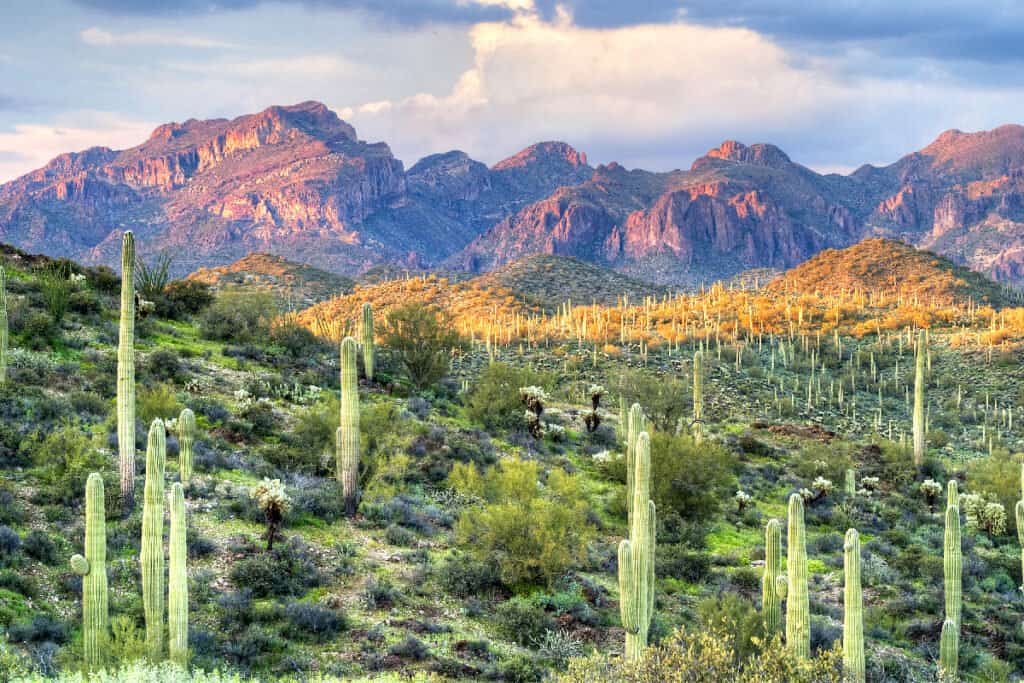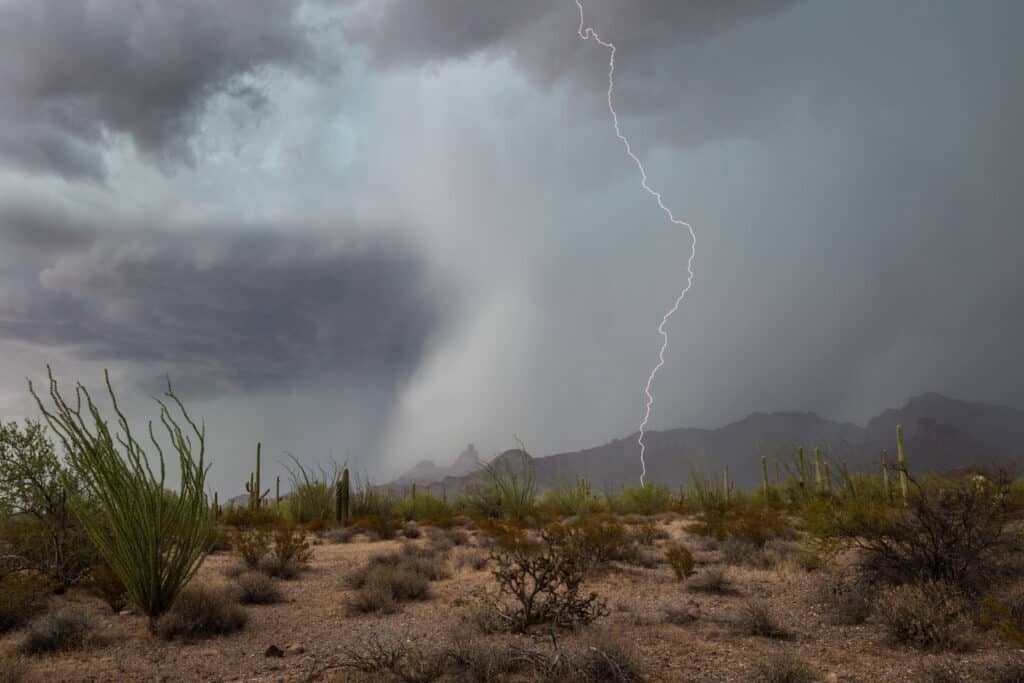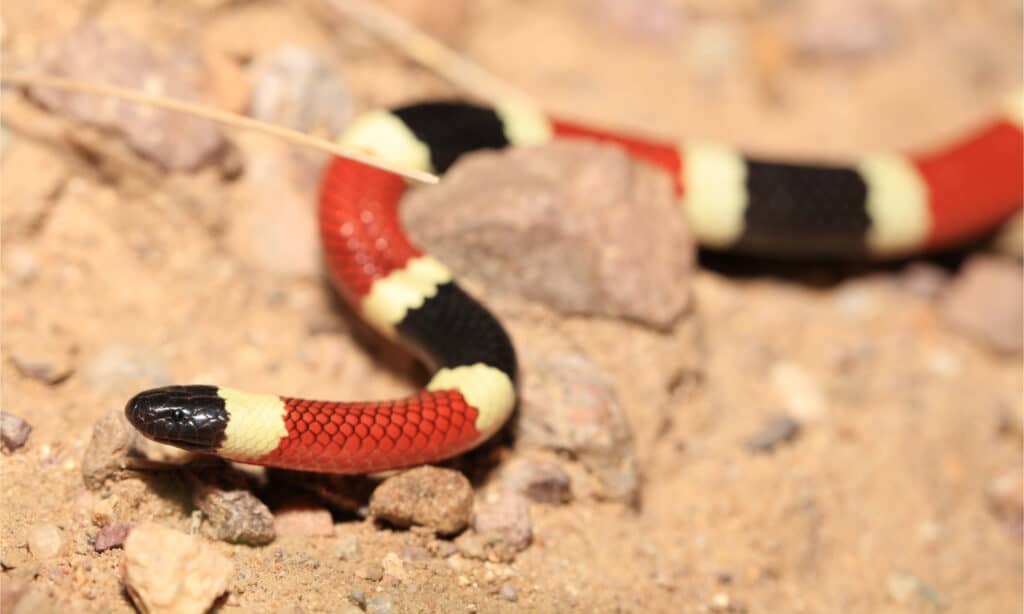If you want to visit a hot desert full of cacti and stunning sunsets, the Sonoran Desert might be just the place for you. There is a wide range of biodiversity within the Sonoran Desert, with a good portion laying right on the coast of the Gulf of California. Between the rainy season’s deluge, the spring wildflowers, and the scorching hot summers, there is never a dull moment in the Sonoran Desert.
How Large Is the Sonoran Desert?
The Sonoran Desert is 120,000 square miles. It spans two countries in North America, although it is not the largest desert on the continent. That distinction belongs to the Great Basin, which is around 190,000 square miles. However, the Sonoran Desert is shaped uniquely. It wraps around the Gulf of California and has plenty of coastline.
There are actually six sub-regions within the Sonoran Desert. These are the Yuma Desert, the Colorado Desert, the Gran Desierto de Altar, the Lechuguilla Desert, the Tonopah Desert, and the Yuha Desert. Some portions are in the United States while others are in the northwest corner of Mexico.

Saguaros and prickly pear cacti in the Sonoran Desert
©iStock.com/Nate Hovee
Where Is the Sonoran Desert Located?
The Sonoran Desert is in the southwest of the United States and parts of Mexico. It is in the southern-most part of California and Arizona. The desert covers most of the Baja Peninsula in Mexico. It also extends into Sonora, the Mexican state just below Arizona.
Much of the Sonoran Desert is actually coastline. It is on the edge of the Gulf of California. Near the coast, the ecosystems are vastly different than those further inland. This biodiversity makes the Sonoran Desert one of the most interesting places to study.
The Sonoran Desert runs right into the Mojave Desert, which is to the north. Elevation in the Mojave is higher than in the Sonoran Desert, which impacts both the temperatures and precipitation in the two regions. Even though they are in close proximity, there is a wider range of climates and landscapes in the Sonoran Desert.
Part of Joshua Tree National Park, the Casa Grande Ruins National Monument, and the Organ Pipe Cactus National Monument are all in the Sonoran Desert. It is also home to numerous wildlife refuges. The Sonoran Desert is home to Reservations, including lands belonging to the Tohono O’odham, Yaqui, Pima, and Yuman people.
Phoenix, Arizona is the largest city within the Sonoran Desert. It is also the capital of Arizona. The city is known for the saguaro cacti, which only grow in the Sonoran Desert. Phoenix takes a lot of pride in its identity as a desert city. The winter months are mild and good for hiking and other outdoor activities. Summer can be scorching hot and dry, so most native Arizonians spend their time inside or enjoying water activities to stay cool.

Saguaro cactus only grow in the Sonoran Desert.
©LHBLLC/Shutterstock.com
What Is the Average Annual Rainfall in the Sonoran Desert?
The Sonoran Desert typically experiences a more intense rainy season than many other deserts. However the exact amount of rainfall varies based on your location within the Sonoran Desert. Annual average rainfall is between three and 20 inches. Across the entire desert, the average is 15 inches per year.
There are two distinct rainy seasons, winter and summer. The winter rainy season spans December and January, while the summer rainy season includes July, August, and part of September. The rainiest months are December, August, and September.
The dry seasons are spring and fall. May and June are the driest months in the Sonoran Desert. Even during the rainy seasons, the sun is usually shining and the temperatures remain elevated.
One of the most interesting features of rain in the Sonoran Desert is that it can come on suddenly and with great force. Even though it does not rain a lot overall, the majority of the rain that does fall can come from one or two major storms. Yuma, AZ, is known as a very dry area that gets little to no rain. It is typically on the lower end of the region’s averages, with around 3 inches of rain per year. However, this can all come from one major thunderstorm rather than multiple smaller showers or storms.

Rainstorms in the Sonoran Desert can come on suddenly and be extremely forceful.
©Mike Hardiman/Shutterstock.com
What Are the Hottest, Coldest, and Average Temperatures in the Sonoran Desert?
Generally, the Sonoran Desert is hot and dry. While changes in temperature do occur with the seasons, it still remains hot and sunny for most of the year. Even the cooler winter months do not require a jacket and winter coats are unheard of in this desert landscape.
High Summer Temperatures
The hottest month in the Sonoran Desert is typically July, although August comes at a close second. Temperatures in July can reach as high as 107 degrees Fahrenheit and average around 93 degrees. August highs can get up to 106 degrees Fahrenheit, with an average of 92 degrees.
June, July, August, and September often see temperatures above 100 degrees and are the hottest months. This is why so many people who live in Phoenix, the largest city in the Sonoran Desert, stay indoors during these months. Businesses give water to patrons (and their pets) to try to reduce the number of people (and pets) that have heat-related health issues.
Lower Winter Temperatures
The winter months are a big cooler. The coldest month is December, with temperatures as low as 40 degrees Fahrenheit. The average for December is around 53 degrees. Temperatures in January are similar. Things start to warm up a bit going into February, when low temperatures get up to around 44 degrees. The high side of the range during these months is between 68 and 72 degrees,
Many people who live or visit the Sonoran Desert use the cooler winter months to take advantage of outdoor activities. Hiking, camping, and outdoor sports are all popular. It is also a great time to enjoy the national and state parks, wildlife refuges, and numerous trails. In fact, some people spend their winters in cities such as Phoenix to be able to enjoy the mild climate and avoid frigid, snowy weather.

Sonoran coral snakes are highly venomous, but they have short fangs that can barely break human skin.
©Alexander Wong/Shutterstock.com
How Much Rainfall Does It Get?
The Sonoran Desert gets noticeably less rainfall than many other deserts. There are distinct rainy seasons when the majority of the precipitation does fall. In an area that gets as little as 3 inches of rain during an entire year, this may all come from one single thunderstorm. Some years, it comes from multiple smaller storms. Rarely, it comes from consistent small showers.
Even though it does not have a lot of moisture, the Sonoran Desert is still home to many interesting plant and animal species. These species have mostly evolved to survive with very little water, either by effectively storing what water they do get or being able to go into a hibernation-like state when they do have access to water.

The Western Desert (Mexican blond, or Arizona blond) tarantula has a blond carapace with a darker abdomen and legs.
©Ryan M. Bolton/Shutterstock.com
Cacti are a great example and there are numerous species that grow across the Sonoran Desert. Agave, palms, and legumes are also common in this landscape. The saguaro cactus only grows in the Sonoran Desert and has become a symbol of this region.
Up Next:
- The 4 Largest Deserts in North America are Stunning
- 7 Hottest Deserts on Earth are Absurdly Warm
- The 9 Deadliest and Most Dangerous Deserts on Earth
The photo featured at the top of this post is © iStock.com/Nate Hovee
Sources
- Arizona-Sonora Desert Museum, Available here: https://www.desertmuseum.org/desert/sonora.php
- Britannica, Available here: https://www.britannica.com/place/Sonoran-Desert
- Visit Phoenix, Available here: https://www.visitphoenix.com/stories/post/phoenix-field-guide-exploring-the-sonoran-desert/
- National Park Service, Available here: https://www.nps.gov/im/sodn/ecosystems.htm#:~:text=Annual%20precipitation%20in%20the%20Sonoran,variability%20in%20timing%20and%20quantity.
- Weather, Available here: https://www.timeanddate.com/weather/@5315081/climate
Thank you for reading! Have some feedback for us? Contact the AZ Animals editorial team.






